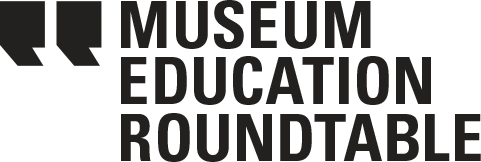MER Talks: Autism Acceptance Month
The beginnings of Autism Awareness Month date back to 1970 when the Autism Society of America lobbied for nation-wide recognition for people with autism. In 2007, the United Nations declared April 2nd “World Autism Awareness Day.” There is no doubt that efforts like these formalized days on the calendar, the ‘light it up blue’ campaign and the puzzle-piece ribbon, have raised awareness for autism spectrum disorder (ASD). But today’s accessibility allies and advocates are rethinking these strategies and considering what’s next.
Is ‘awareness’ enough? Most people are aware of autism but the autistic community is looking for progress towards breaking down barriers, stereotypes and biases. There are growing movements, like the Neurodiversity Movement, that reject virtue-signaling behaviors and instead demand autism acceptance and tangible actions that improve the lives of autistic people.
In this blog post, two museum professionals, Sam Theriault and Abigail Diaz, discuss how autism has affected their lives, how people with disabilities are being impacted by the current pandemic and share their hopes for a more inclusive future.
A Note on Language
This blog post will use both identity-first and person-first language. We acknowledge and respect all the ways that people identify. We will also be referring to Autism Acceptance Month rather than Autism Awareness.
Autism Acceptance Month
Sam: When we talked about language choices, you asked me if I prefer Awareness month or Acceptance month. Often, when I talk about autism with museum colleagues, I wonder how aware they are of the spectrum’s diversity, and the prevalence of misconceptions like “autistic people don’t feel empathy/don’t want to socialize ever/can’t communicate/can’t contribute to museums.” We of course do these things–though perhaps differently than society expects. Awareness is the baseline, the minimum. Acceptance, to me, is more in line with equity and inclusion. So, ultimately, I lean toward Autism Acceptance Month.
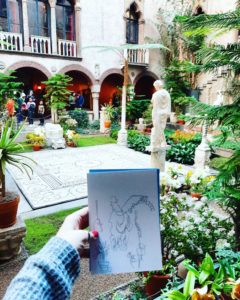
Abbie: I’m torn about it. On one hand, I appreciate the attention the month can bring to autism. But I also think we should move away from the “heroes and holidays.” What are you doing every day to make the world more inclusive? That’s more what I care about. This month makes it easier to put in blue lightbulbs and feel like a real ally, which is ridiculous.
Sam: Usually museums use this month to highlight their autism-friendly programming on social media, but I think the pandemic has upended all our online engagement plans. Alternatively, I wonder if museums are aware of how to engage with autistic audiences beyond promoting sensory-friendly time at the museum.
Abbie: Agreed! Sensory-friendly is great for lots of different people, not just those with autism. And sensory-friendly isn’t the only way to engage autistic people. Too many people default to putting people in “buckets,” right? As if people with this diagnosis will like this thing and people with another diagnosis will like something else. Dr. Stephen Shore said, “If you’ve met one person with autism, you’ve met one person with autism.” It’s a spectrum and people have multiple diagnoses and identities and needs.
Disability during a pandemic
Sam: Yes, and I can’t speak for everyone either. However, I am very worried about other autistic and disabled people and our access to healthcare. It’s not a new anxiety but it’s renewed because of this. Coronavirus is compounding issues that disabled people face all the time. The biggest thing for me is the loss of my routine. Routine is really important to people on the spectrum and that’s something a lot of my peers are feeling right now, in addition to isolation, anxieties about our and our loved ones’ health, and the general uncertainty of what will happen next.
Abbie: I don’t have the lived experience of having a disability but I am a caregiver to my brother who has disabilities. So in addition to all the anxieties that come along with the pandemic, there’s also the feeling of helplessness that he’s in quarantine without me. I can’t go see him, he can’t come see me, he can’t leave the house and he doesn’t understand what’s happening. So my own anxiety comes second to trying to help him feel better and make him understand that we’re not ignoring him or avoiding visiting him on purpose.
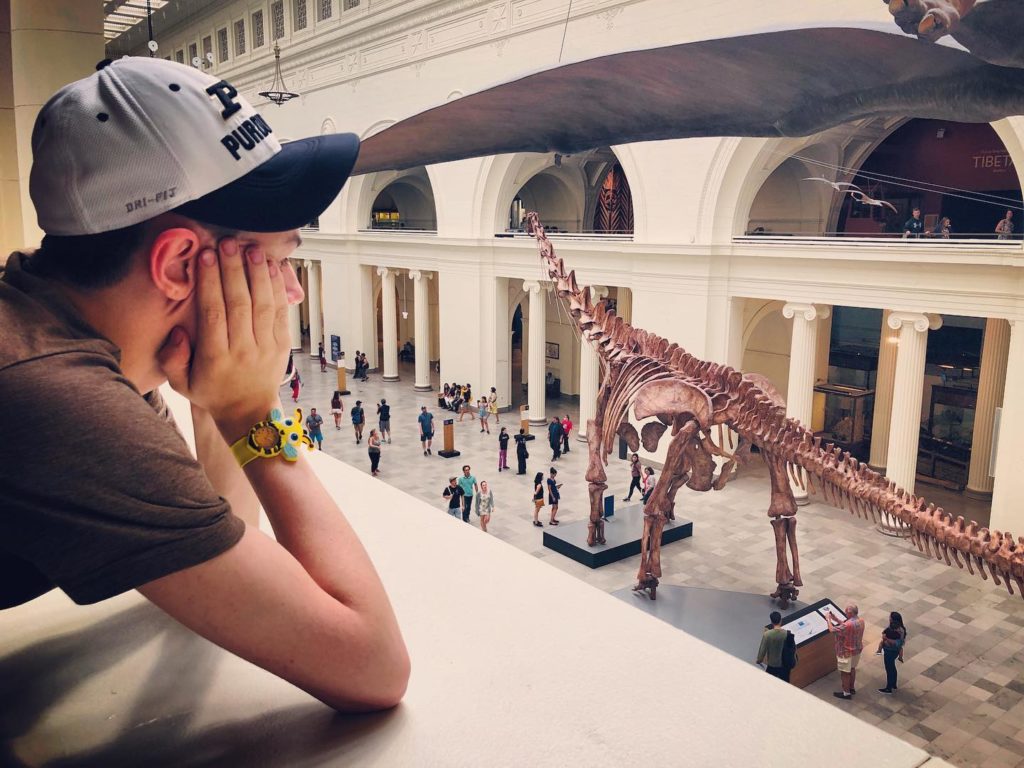
Access and Inclusion
Abbie: I can speak to accessibility as an ADA Coordinator, but also a caregiver. I see museum professionals get caught up in the details of hosting sensory-friendly events–they get paralyzed by indecision. For my brother and me, the most important thing is being welcomed into a space with compassion and understanding. Will you treat my brother like a human being? Will you look him in the eye? Will you talk to him rather than only speaking to me? Have you fostered a welcoming environment? Does your staff know how to handle a meltdown or outburst? Staff training is one of the most important parts of accessibility and inclusion.
Sam: If staff aren’t treating people like humans, how are they carrying out what Lois Silverman calls the social work of museums? She argued that museums must “recognize the need to address two major systems for change: people at risk and the social conditions that create and contribute to such risk.” So to engage audiences like the autistic community, museums need to recognize us as a community, learn more about the social conditions that marginalize autistic and otherwise neurodivergent communities, and realize that their own institutional structure contributes to ableist social conditions. Sensory mornings, and the associated staff training, are an essential first step to engaging with us, and museums should be doing it. Sensory mornings are accommodations that get some of us in the door who otherwise couldn’t. That kind of access can create a pathway to move into even more inclusive work.
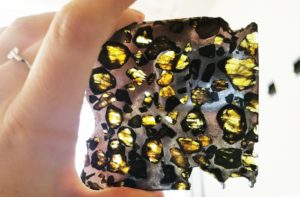
Museums and Ableism
Abbie: My brother Daniel loves museums but they were designed to be places that he doesn’t belong. We want to see museums shifting their understanding of autism from the medical model to the social model of disability (the idea that the attitudes and structures of society are disabling, rather than the medical condition), to build places that are for everyone. It’s these older, archaic ways of thinking that are detrimental.
Sam: We do belong in museums–as both visitors and museum professionals–and we shouldn’t be made to feel otherwise. Part of me thinks the word “autism” turns people off because they don’t truly understand the spectrum. I have what used to be described as “Aspergers” (which is no longer used as a diagnostic term). Though I often mask, or camouflage, to fit in, I still have challenges that affect me in museum work. I, and my peers, also have a unique way of thinking that can benefit museums. Unfortunately, the museum field has a habit of underestimating autistic people. We especially underestimate those who need more support than I do, and assume they don’t have anything to contribute or don’t belong in museums. That just isn’t true. That’s ableism in a nutshell.
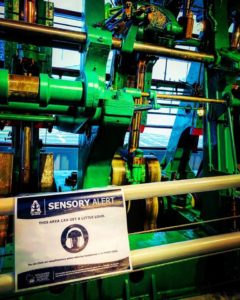
Abbie: Ableism is such a tricky thing, because it’s hard for people to realize they’re doing it. We see a lot of framing of disabilities as ‘tragic’ and suggesting everyone with a disability is suffering. Or, we see superficially positive stories, like glorifying people with ASD for every day achievement. Ableism is insidious because it’s cloaked in love and empathy; people think they’re being nice. But it’s strangling and harmful.
I’ve gotten it wrong and I still get it wrong sometimes. In the past, instead of amplifying what Daniel wanted or needed, I took on his disability as my own and used it to make my thoughts louder. I’ve thought I knew better than autistic people because I knew Daniel. Caregivers and parents need to really do the self-work and understand this is not our disability. I’m deeply grateful to people with disabilities for checking me and educating me.
What should museums be doing?
There are some museums that are doing truly good work with autism and disability, which we see reflected in JME articles and on social media. MER will also feature some of these stories in our upcoming Virtual Special Issue celebrating the anniversary of the Americans with Disabilities Act.
At the same time, museums could do more to center the disability community and collaborate to remove barriers to inclusion, especially as many of us use this time to reimagine the future of museums. For instance, it would be easy to decide our post-pandemic museums will remove touch screens and hands-on exhibits. Many visitors, but especially neurodivergent and disabled ones, rely on touch exhibits in museums to help them understand or engage with the content (or need to use handrails, sit on benches, etc.). As we rightly consider safe museums, we still need to engage neurodivergent and disabled audiences in meaningful ways.
It’s our hope this radical reimaging includes the autism community, an integral part of our audience. There is a common refrain in the world of disability activism: “Nothing about us without us.” Imagine including us as you consider what to do about touch exhibits, as you plan upcoming programs or brainstorm new ones, and as experts in your staff trainings. We imagine a world beyond awareness and acceptance; we imagine the true inclusion and celebration of autistic people.
Resources
Neurotribes: The Legacy of Autism and the Future of Neurodiversity, Steve Silberman
Spectrum Women: Walking to the Beat of Autism,Edited by Barb Cook and Dr. Michelle Garnett
All The Weight of Our Dreams: On Living Racialized Autism,Edited by Lydia X. Z. Brown, E. Ashkenazy, and Morénike Giwa Onawiu
Making the Invisible Visible: Invisible Illnesses and Disabilities in Medical Collections, Dr. Angela Stienne (ICOM Voices)
The Multisensory Museum,Nina Levent, Alvaro Pascual-Leone
“For Autistic People, ‘Benevolent Abelsim’ Can Be a Form of Bullying,” Teen Vogue Op-Ed, Haley Moss
Inspiration Porn and the Objectification of Disability, Stella Young (TED Talk)
Social Media Conversations: #ActuallyAutistic, #AutisticWhileBlack, #SoyAutistica, #AskingAutistics, @AutisminMuseums, @MuseumDCN, @Imani_Barbarin
Bios:
Sam Theriault is the Museum Education Roundtable’s Membership and Marketing Manager. She is also a self-advocate in the autism community.
Abigail Diaz (she/her) is the Director of Education & Programs at the Wisconsin Maritime Museum. She is also on the Museum Education Roundtable’s Board of Directors.
